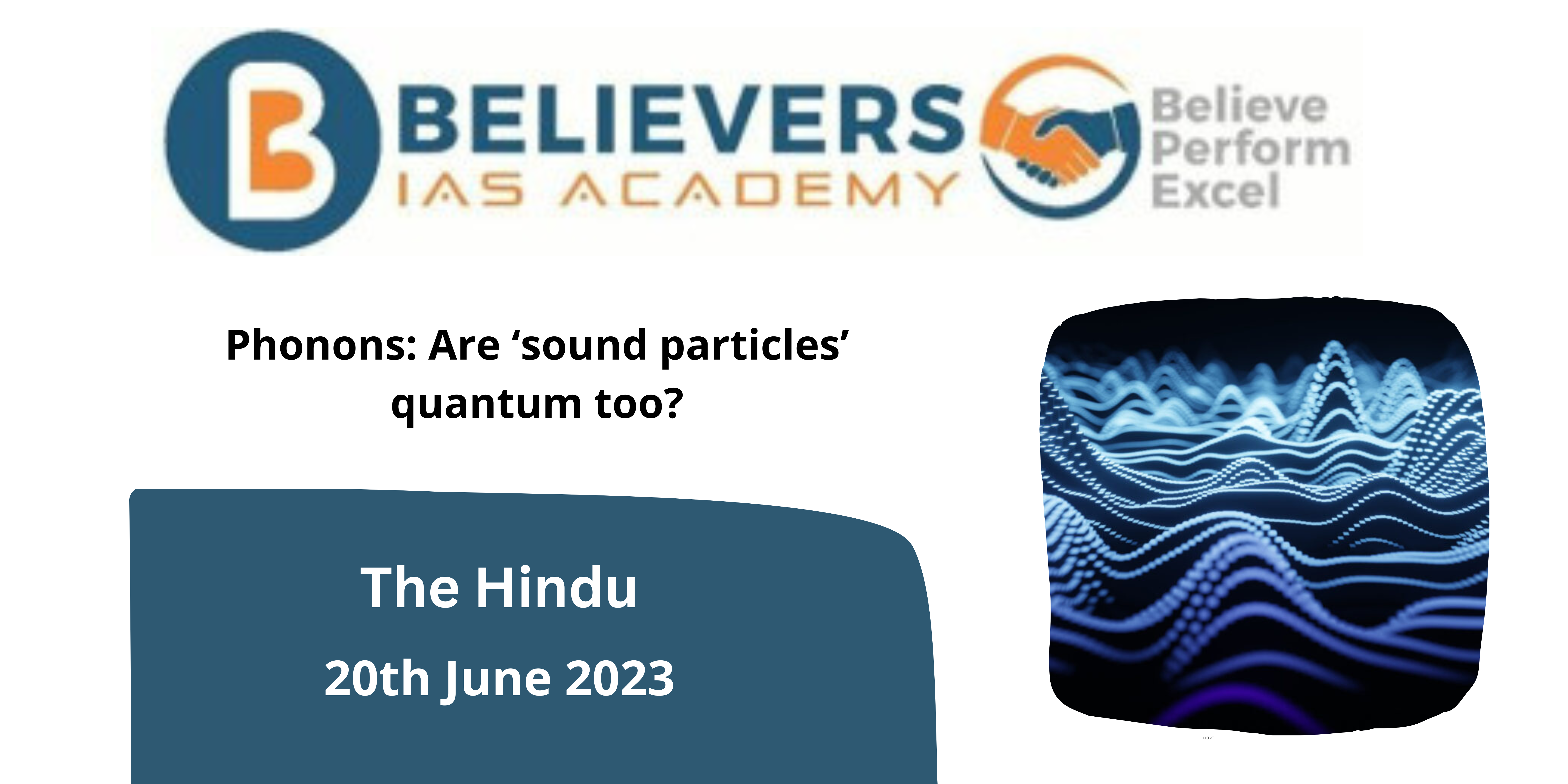Phonons: Are ‘sound particles’ quantum too?
Context :
Qubits are the fundamental informational building blocks of quantum computers. Using a novel type of beam-splitter, physicists have discovered that packets of vibrational energy (phonons) behave like packets of light energy. Technically, this makes them eligible to function as qubits as well.
Quantum Computers and Qubits:
- A novel sort of computer technology known as a quantum computer uses the concepts of quantum physics to carry out intricate calculations.
- Like the bits in classical computers, qubits are the fundamental building blocks of information in quantum computers.
- Particles (like electrons) or quantum systems designed to behave like particles can both be qubits.
- Qubits can exist in a superposition of states, such as “on” and “off,” concurrently thanks to quantum characteristics.
Quantum Computing with Photons and LOQC:
- Linear optical quantum computing (LOQC) is a type of quantum computing that uses photons as qubits.
- To process the information recorded on photons, LOQC uses optical apparatus such as mirrors, lenses, and splitters.
- Due to photons’ dual behaviour as particles and waves, interference patterns and intricate calculations are possible.
Exploring Phonons as Qubits:
- Similar to how photons are packets of light energy, phonons are packets of vibrational energy.
- Phonons may be used as informational units in quantum computers, according to research.
- If quantum-mechanical processes can be used to regulate and alter phonons, they might be used as qubits.
Acoustic Beam-Splitter:
- An acoustic beam-splitter was created by the University of Chicago researchers to control phonons.
- The acoustic beam-splitter was a tiny gadget with 16 metal bars that resembled a comb.
- Superconducting qubits were positioned at either end of a lithium niobate channel in which the beam splitter was put.
Phonon Interactions:
- The experiments showed that phonons interacted with the acoustic beam-splitter similar to how photons interact with optical beam-splitters.
- When a phonon was emitted from one side of the channel, it was reflected 50% of the time and transmitted to the other side the other 50%.
- When phonons were emitted simultaneously from both sides, they ended up on the same side.
Validation of Quantum Behavior:
- The researchers’ tests confirmed that phonons exhibit quantum behaviour, consistent with the principles of quantum mechanics.
- This validation suggests that phonons can be utilized as qubits in a quantum computer.
Challenges and Future Prospects:
- Even while the study shows that employing phonons as qubits is possible, there is still a long way to go before it can be used in a working quantum computer.
- The study broadens the quantum computing toolkit, creating additional opportunities and directions for further study.
- As researchers build on these discoveries to create real-world applications of phonon-based quantum computing, more developments and research in this area are anticipated.




